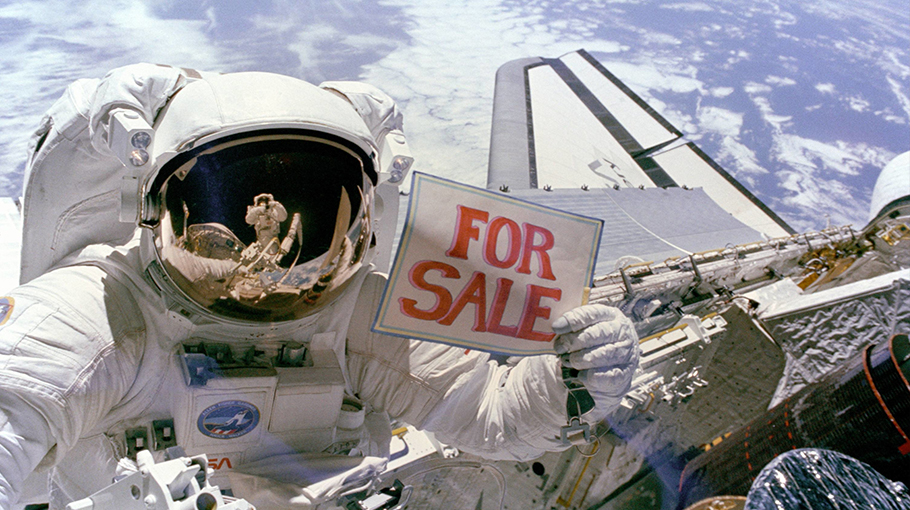Our space junk problem just got a cheap solution
We’re getting better at spotting and dodging debris in orbit


This month, a hunk of space junk hurtled toward the International Space Station, putting the safety of astronauts and their orbiting outpost at risk. Fortunately, the cosmic hazard was detected early and an emergency maneuver rocketed the $150 billion station out of harm’s way. Such episodes, which burn gallons of valuable propellant, cost NASA and its partners an average $1 million per incident.
There must be a better way, right? For years now, scientists and engineers have been dreaming up alternatives — mainly pricey new robots that could remove rapidly multiplying space junk or shove it further into space. But what if the best solution is what they’ve been doing all along — just getting out of the way?
An unusual new NASA space junk study asked a question only an accountant could love: What’s the most cost-effective way of solving the problem? Rather than focus on whether removing junk enhances safety and sustainability, NASA wondered if the potential cost of collisions justifies the development of expensive new technologies to clean up the heavens.
And it turns out it probably doesn’t — not in this century, at least. Instead, Earth-bound humans could save a lot of money and effort by honing their debris-tracking and dodging skills while forging international agreements to minimize the creation of more space junk in the future.
The Soviet Union’s Sputnik satellite became the world’s first space junk when its batteries died just three weeks after its 1957 launch. By the end of that decade, dead satellites, spent rocket stages, screws, bolts, tools dropped during space walks, flecks of paint and a wide range of scrap metal were zipping around the Earth. Today, in addition to roughly 7,200 working satellites occupying orbit, there are about 36,500 objects greater than 4 inches in size (including 2,500 dead satellites), 1 million pieces of debris between 0.4 and 4 inches, and 130 million pieces of debris less than 0.4 inches.
If global agreement can be achieved
on preventing junk, the more difficult
question of sharing the costs and
burdens of remediating what’s
already there can start
Impacts happen. In 2009, a dead Russian machine collided with an active U.S. satellite at a speed of 22,300 mph, destroying it — and sending at least 2,000 new pieces of space junk into orbit.
Enter NASA’s Office of Technology, Policy, and Strategy. Its new study, distilled to its most basic elements, sought to put a price on avoiding space junk and then examined other potential solutions that would pay off in a reasonable amount of time. Its surprising finding, considering the alarm that space junk inspires, is that while it can be very expensive to maneuver the giant space station, avoiding junk costs U.S. satellite operators a mere $58 million a year. For example, the estimated cost of moving a customized, $500 million commercial satellite out of the way of trackable space junk is $699, including labor. For a price like that, it’s hard to justify investing in some of the more speculative and expensive technologies that have been proposed over the years.
Fortunately, there are more affordable options for lowering risk today and into the future. The most obvious is to limit the amount of junk that’s being launched and left in space. And there are good ways to do that, starting with rules requiring satellite owners to take their spacecraft out of crowded orbits after they are no longer useful.
If global agreement can be achieved on preventing junk, the more difficult question of sharing the costs and burdens of remediating what’s already there can start. According to NASA’s new report, ground and space-based lasers that push junk out of the way without destroying it might achieve break-even economics within a decade. U.S. rivals will need assurances that such lasers aren’t offensive weapons. A comprehensive space junk treaty could offer a pathway for doing that, especially as space becomes more congested with the assets of other countries. Space will be everyone’s problem.
Adam Minter is a Bloomberg Opinion columnist covering Asia, technology and the environment. He is author, most recently, of “Secondhand: Travels in the New Global Garage Sale.”
Source: Bloomberg


